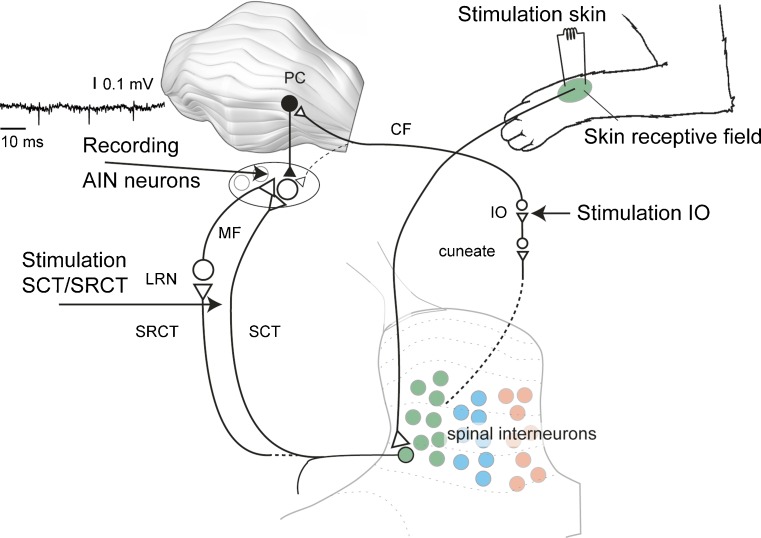Fig. 1.
Targeted circuitry structures. Recordings were made from neurons of the anterior interposed nucleus (AIN). Direct electrical activation at the level of the lateral reticular nucleus (LRN) in the brainstem presumably activated both fibers of passage of the spinocerebellar tracts (SCTs) and the spinoreticulocerebellar tract or pathway (SRCT), where the latter represents spinal interneuron information that is forwarded to the cerebellum after a synapse in the LRN. SCT and SRCT pathways, which make mossy fiber (MF) synapses with the AIN neurons, were also activated using electrical stimulation of the skin. Importantly, the electrical skin stimulation was made from specific receptive fields that did not overlap the climbing fiber (CF) receptive field of the Purkinje cells (PCs) that were afferent to the AIN neuron recorded from [4, 6]. Climbing fiber activation was achieved by direct electrical stimulation in the inferior olive (IO).

